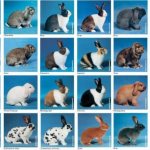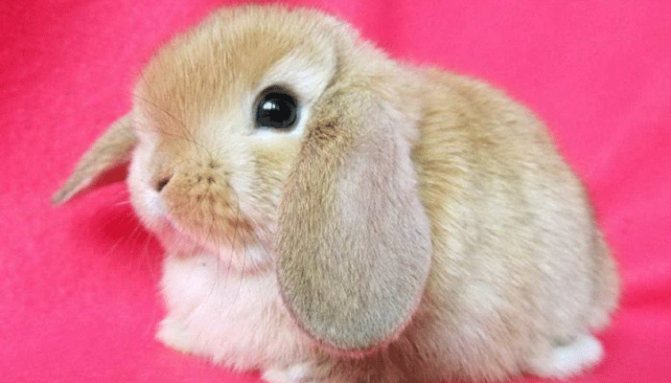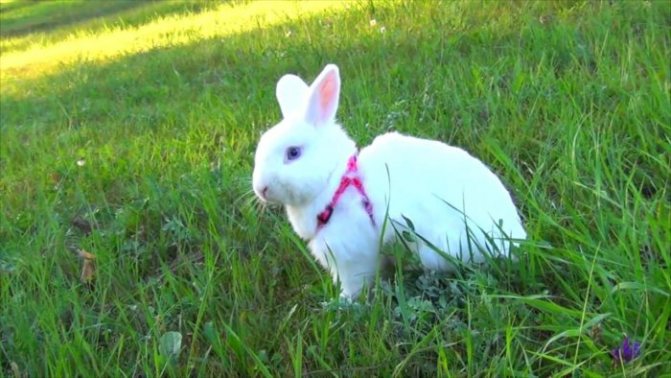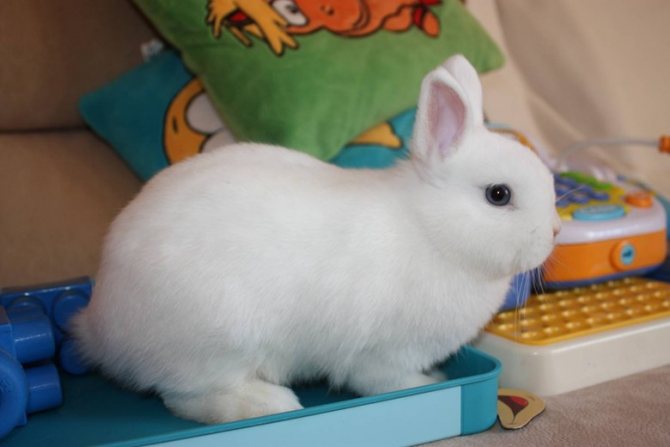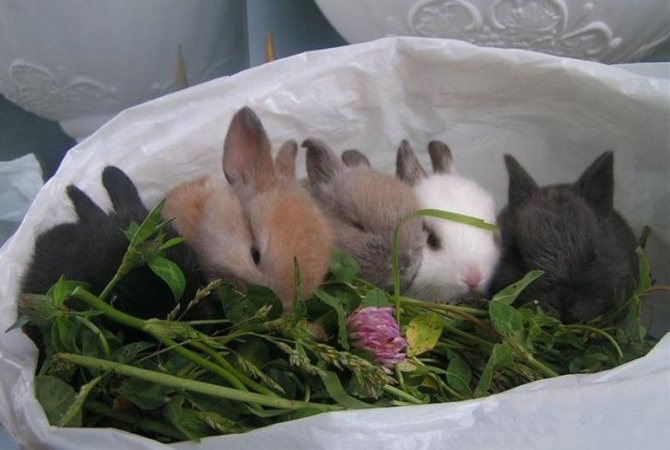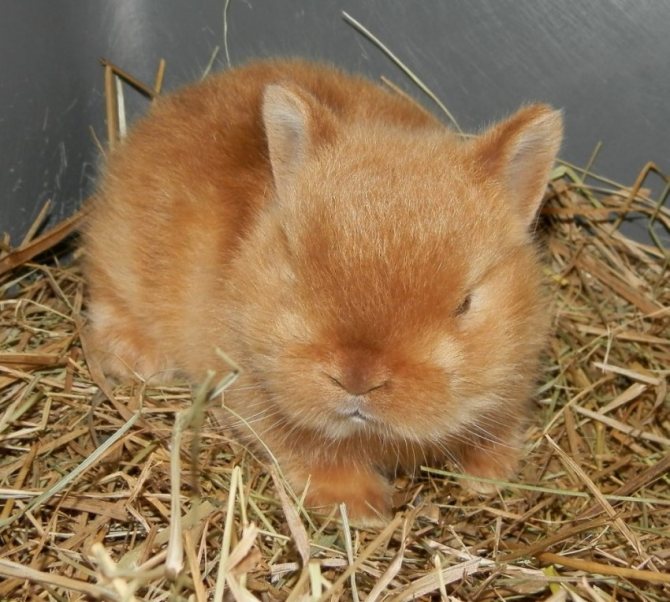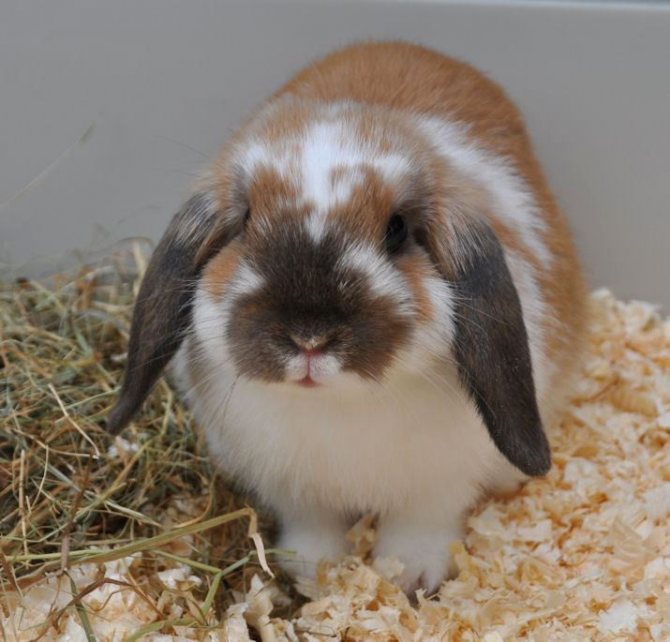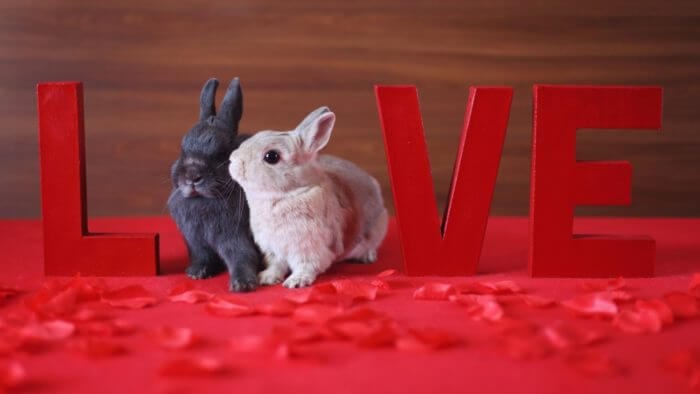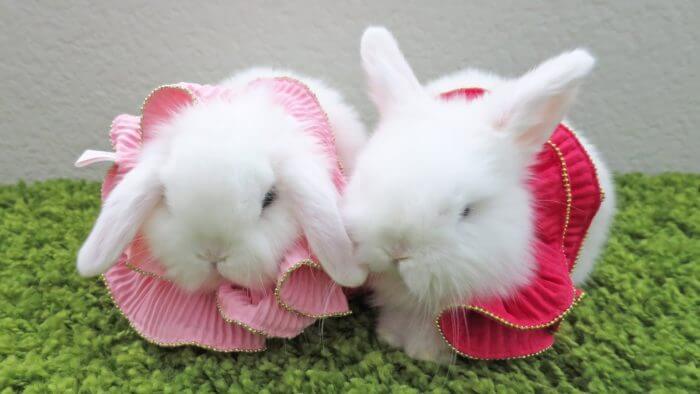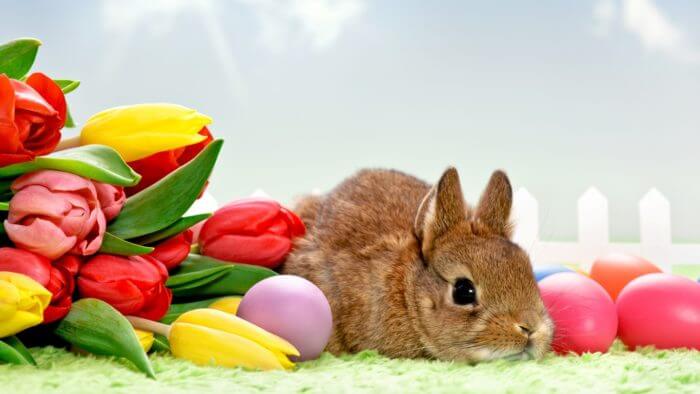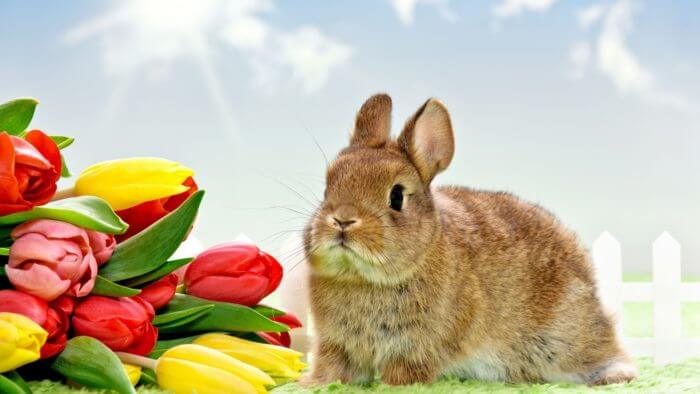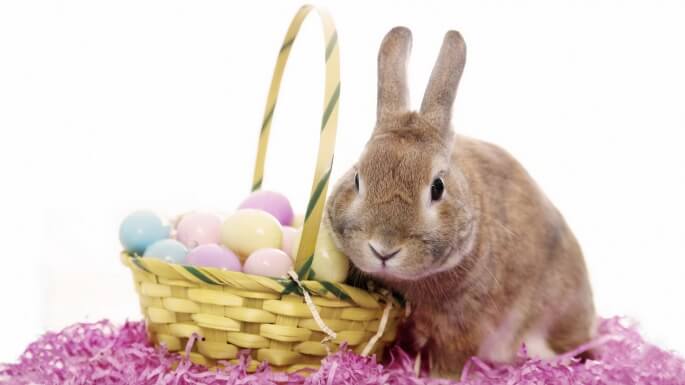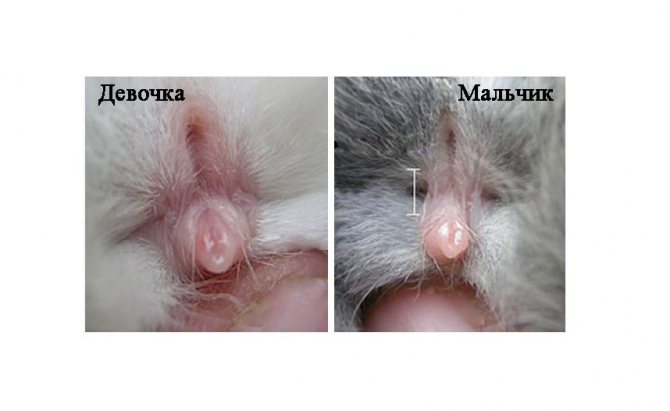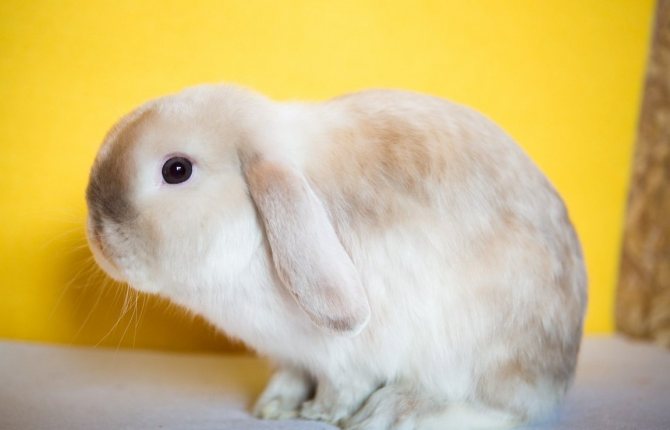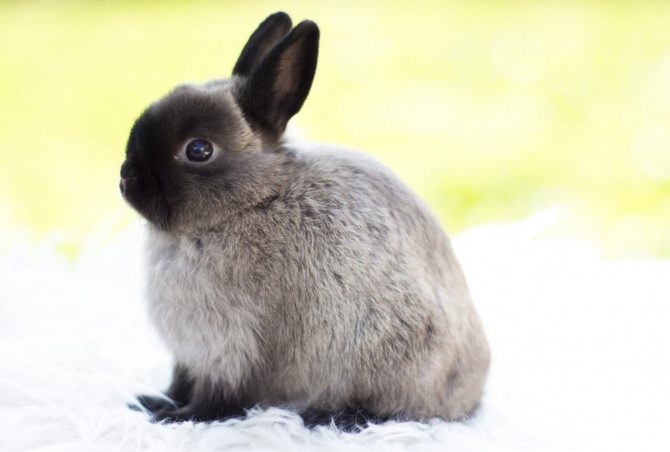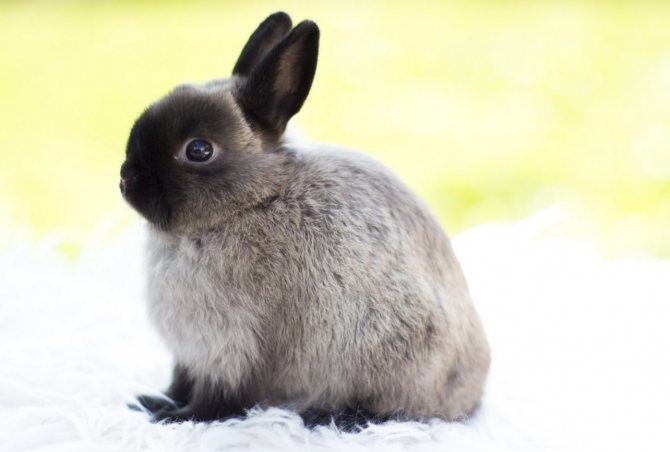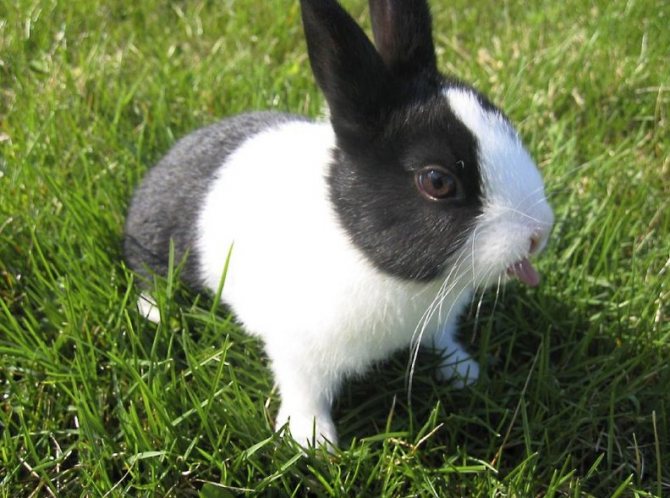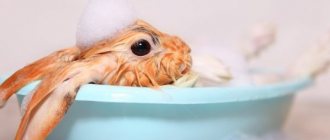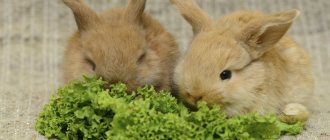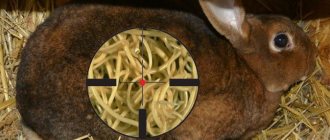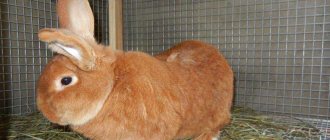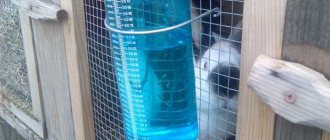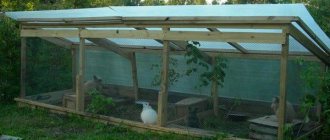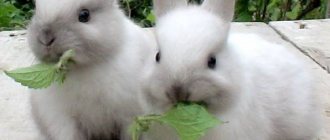Features of the view
Decorative rabbits were bred for keeping at home. It is optimal to buy them in nurseries or from trusted breeders - in stores they rarely follow the rules for caring for the animal and do not give any guarantees that you will buy a healthy animal.
On sale you can find different types of decorative rabbits - with erect ears, ram-rabbits, with red eyes, and so on. The most beautiful breeds are considered to be with long hair, but keep in mind that they require careful care (the fur is combed out daily).

Dwarf breeds of rabbits are classified according to coat length, weight and ear shape.
Decorative rabbits can also be grown for meat and fur. In this case, rather large specimens are used.
The life expectancy and health of a pet largely depends on you, or rather, how carefully you will comply with the conditions of its keeping. In general, a decorative rabbit is a breed for the soul, such an animal will become a real friend for the whole family.
Lion head rabbit breed
Rabbits of this breed are very beautiful. These rabbits in appearance, however, resemble miniature lions. There is a mane on the face, so the head looks larger, making the rabbits look very cute. On the rest of the body, the coat is much shorter. But there are species in which the coat is also long on the sides.


The fur on the muzzle of this species of rabbits resembles a lion's mane, which contributed to the name of the animals.
Popular breeds
Consider the most popular breeds of decorative rabbits for home growing:
- Lop-eared pygmy ram - it looks straightforward and funny due to the original shape of the ears, which, as it were, form a horseshoe.


How many dwarf rams live and how to care for them this will tell
article.
- Colored dwarf - presented in a wide variety of colors, cute and unpretentious animals to care for.
- Dwarf foxes - have a long coat, very pleasant to the touch. The color of the fur can be white, red or blue.
- Dwarf angora - have a luxurious coat and are especially popular with young children.
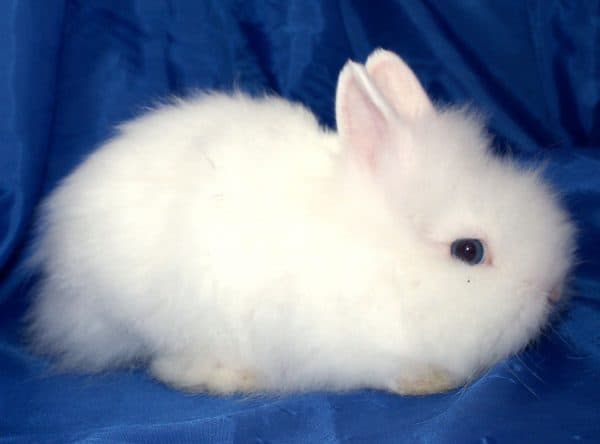

Angora pygmy rabbit
- Rex - wide range of colors, plush fur, very pleasant to the touch. An ideal breed for young children.
- Japanese dwarf - can be two-color.
- Hermelines - white dwarf rodents with red or blue eyes. The coat is short and thick.
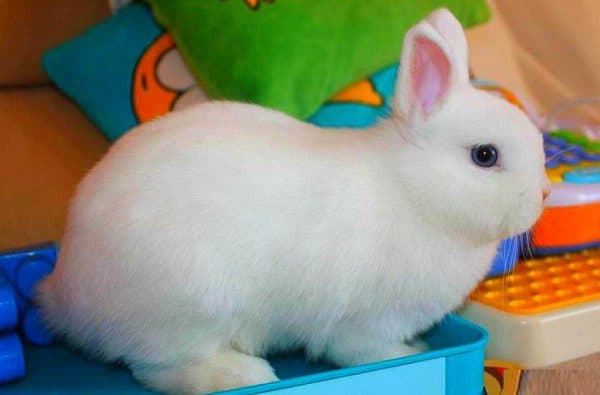

Dwarf rabbit Hermelin
Before choosing, be sure to carefully read the characteristics of the breed, consult with the breeder. The fact is that each type of decorative rabbits has its own character, about the features of which it is better to know in advance.
Some breeds like Hermelin are quite aggressive, so they shouldn't be bought for kids.
Differences between the concepts "decorative", "dwarf" and "miniature"
Any rabbit that is kept as a pet, not trying to get a skin, meat or fluff from it, falls under the concept of "decorative". Ornamental may be a medium-sized black-fiery skinned, meat-skinned Californian and Dutch or meat giant - the Flanders rabbit.
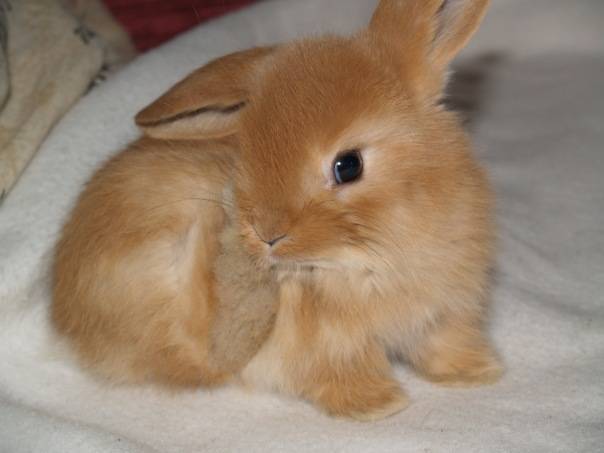

The dwarf rabbit often has a body the same size as its industrial breed ancestors.But at the same time, dwarfs have short legs, due to which they seem smaller. Such animals are born if the dwarfism gene Dw appears in their genome. Sometimes this is a spontaneous mutation, sometimes a deliberate crossing of short-legged animals in order to get a dwarf breed.
The only group of rabbits originally intended to be only pets is the miniature rabbit breed group. Miniature rabbits include all rabbits weighing less than 3 kg.
Content
Caring for decorative rabbits is quite simple. The animals are clean, do not require a lot of space, tolerate transportation normally and do not need daily walks. For high-quality maintenance of a decorative rabbit, you need:
- spacious cage - at least 4 times the size of the animal itself;
- plastic pallet - in the lattice, the legs of the animal fall through;
- autodrinker, feed bowl, manger (hay is added to them).
The location for the cage should be warm. The house is cleaned at least twice a month, the tray is washed weekly. You can, if you wish, carry out hygiene procedures more often.
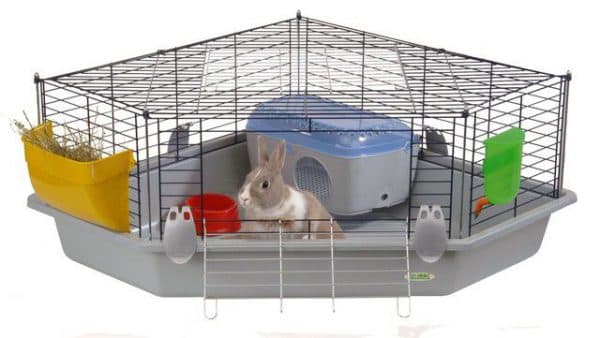

The crawl cage should be 4 times the size of the animal itself
Decorative rabbits do not tolerate bright sunlight and drafts. Consider this when choosing a place to install the cage.
Keep in mind that the animals love to gnaw everything, so watch them when you release them - otherwise wires, plants, shoes will suffer. You can give the rabbits toys - they will be distracted and will stop spoiling everything around them. They especially like boards, cardboard, paper boxes, pieces of fabric. Bathing the animal is usually not required - the rabbits themselves lick their fur. If you do wet it, then dry it without drafts - the animals catch cold and fall ill quickly.
It is necessary to take care of babies of decorative rabbits in your arms, since their bones are very fragile. Also, decorative breeds are very shy, so the proximity to cats and dogs is contraindicated for them (yes, there are exceptions, but it is better not to risk it).
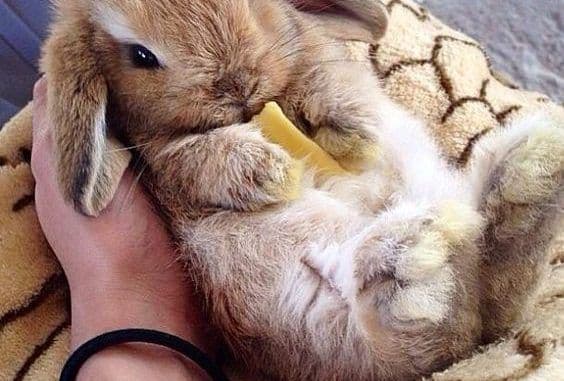

In no case should animals be dropped on the floor - such a flight may be the last in their life.
Preparing to buy an animal
We will immediately warn you against a common mistake - first prepare an apartment for buying a rabbit, and only then go shopping, and not vice versa. The training includes:
- Buying a cage;
- Purchase of feed;
- If possible, hide the wires, as the pet loves to chew on them.
Buying a cage
First, choose a comfortable cage.
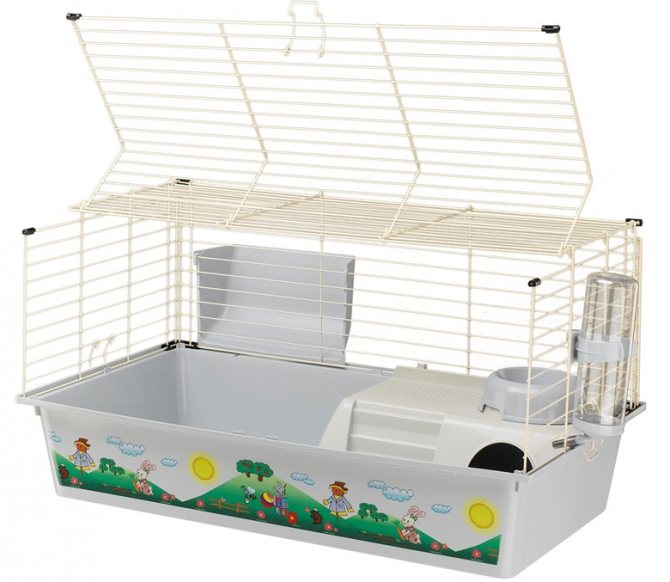

Dwarf rabbit cage
The material of the rods should be only metal, they will quickly gnaw through plastic or wood. Although the cage can be rearranged, it will still have your favorite place, so this place should not be sunny, and there should be no drafts. Rabbits do not tolerate stuffiness, they do not have sweat glands, and if direct sunlight falls on the cage, this can kill them.
The bottom of the cage should be covered with hay, and also attach a feeder, sippy cup, and a small house where the pet could hide from prying eyes. Rabbits are very fond of making noise, kicking everything that is not attached, especially from the early morning. Place a litter box in the corner of the cage, which must be cleaned after use. In a dirty second time, the animal will not go, but will make a business nearby. Plus, if you clean up on time, there will be no unpleasant odors, the decorative rabbit is very clean.
Rabbit food
Their main diet is hay.
It is very important to choose only high quality hay, take it responsibly!
Rabbits have a weak stomach, intestinal upset and diarrhea for these animals is a frequent occurrence with inadequate food and care.


Prepared rabbit food - herbal granules
Also on sale in pet stores you can buy ready-made rabbit food, enriched with vitamins and minerals.
In the summer, you will need to add fresh grass, dandelions, plantain, and yarrow to your diet. With less fun, rabbits are eating apples, cabbage, carrots and beets.
Of the delicacies, one can note raw potatoes (only without eyes and peels) and cobs of sura corn, but these products should be given only in limited quantities, as an encouragement for training.
Care
On average, decorative rabbits live for 7-8 years, long-livers are not found among them. To make the animal comfortable:
- release him from the cage;
- talk, pick up, stroke;
- bother the rabbit as little as possible during the day;
- make sure that there is enough clean water and a variety of food in the cage;
- vaccinate on time (read more about vaccination of rabbits here);
- trim your claws.
Be sure to give your pet a name, preferably taking into account its character and individual characteristics. You can use the names of cartoon characters or human. If you bought an animal for a baby, choose a nickname together.


Domestic rabbits are social animals. They need communication and attention. This affects the length of their life.
You need to communicate with rabbits - this way they feel better and live longer.
Fox dwarf rabbit
Dwarf fox rabbits are very cute, kind and quiet, although there are also very active individuals. They are very demanding in care, they need not only proper feeding, cleanliness, but also attention.
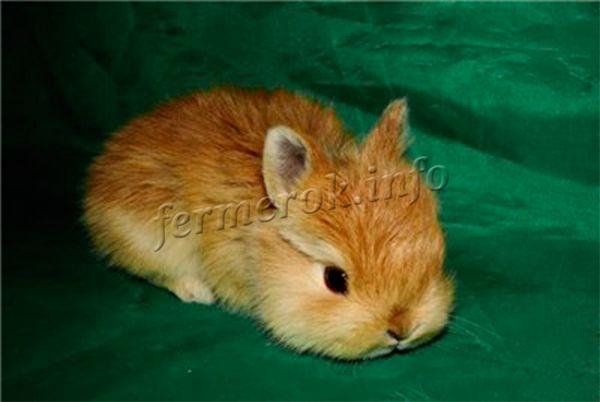

Fox dwarf rabbit
The body of these decorative breed rabbits is strong, small. The head is rounded, slightly elongated, the neck, legs and erect ears are short, the eyes are convex, round and large. Normal weight is up to 1.5 kg, if the animal weighs more, then it is worth adjusting its diet.
The coat is long, so the rabbit needs regular brushing. There are different colors, but the most popular variations of red (like a fox).
Diseases
Decorative rabbits can get sick with infectious and viral diseases. The main ones are rhinitis, stomatitis, staphylococcosis, otitis media, conjunctivitis. The animals suffer from intestinal disorders, they are severely inconvenienced by the active growth of teeth. A complete list of diseases of decorative rabbits is presented in this material.
It is recommended for decorative rabbits to be vaccinated - and, believe me, they will cost you much less than further treatment.
Proper care and proper feeding will help to avoid diseases. Make sure that the animal's diet is balanced, otherwise constant diarrhea cannot be avoided.
Dry food infected with weevils, excess fruits and vegetables, moldy bread, abrupt change of feed, gastrointestinal diseases, unsanitary conditions, viruses cause indigestion. Constipation is common. Read here what to do if your rabbit is constipated.
With diarrhea, you need to disinfect the cage and give the animal a decoction of chamomile. If it persists for a long time, contact your veterinarian.
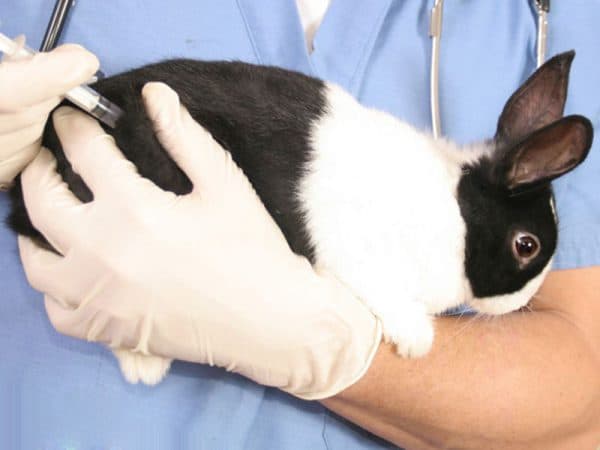

It is necessary to monitor the health of rabbits, regularly conducting veterinary examinations.
Features of breeding for sale
Decorative rabbits give birth to about 8 times a year, but this number may be less. Small breeds begin to multiply at about 6-7 months.
The behavior of a rabbit that is ready for breeding changes dramatically - she rakes the litter into one place and begins to build a nest. For mating, the female is placed next to the rabbit (strictly - the opposite cannot be done).
It is recommended to leave it in the male's cage for some more time for repeated mating, and then return it back to your house.
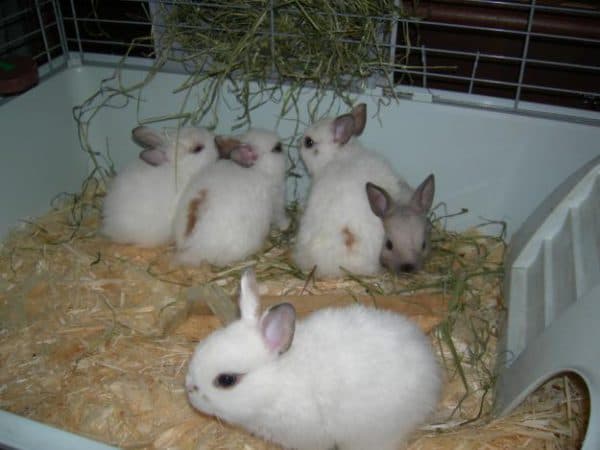

After the birth, the rabbits are left with their mother
If the female is not ready to mate, she will knock with her hind legs and just behave aggressively. In this case, the animals are seated and wait for a more favorable moment.
After mating, a pregnant female after a couple of weeks, when transplanted to the male, begins to behave unfriendly, fights back. This is how it is determined whether it is covered or not. The method is not 100%, as some pregnant females also like to mate.
You can gently palpate the body of the rabbit - small rabbits feel like balls. In no case do not press on your stomach, especially hard. Also, pregnant females often have a brutal appetite. Okrol occurs on average 31 days after coating. The little rabbits are left in the mother's cage - she feeds and licks them.
What to feed rabbits
Rabbits should be fed regularly and adequately. They eat often (up to 30 times a day), so you don't need to limit their food intake. Otherwise, you can harm the digestive system. The food that the rabbit ate is digested rather quickly and reaches the intestines when the animal eats again.
Therefore, it is necessary to feed the dwarf rabbit with dry grass, that is, with hay. It is sold in specialty stores or harvested at home.
However, the pet can refuse hay. Then the dried product must be moistened with water, which is previously slightly salted.
Rabbits should be fed responsibly. It is necessary to draw up a complete diet, which will include various products. Among them, there must be young tree branches (linden, mountain ash, viburnum, etc.).
The bulk of the diet consists of feed. They vary in composition and are sold in specialty pet stores. The food is chosen based on the age of the rabbit. What to feed dwarf pets, besides this?
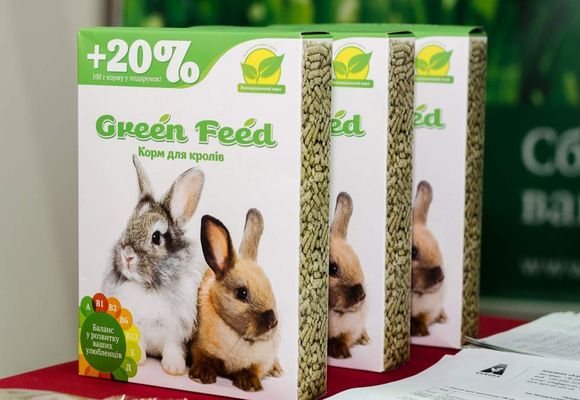

Cereals and legumes (wheat, oats) are added to the feed mixture. To begin with, they are soaked in water or boiled, and then they are served to the rabbit. The animal must also eat juicy food, including vegetables, fruits, berries (apples, carrots, potatoes).
Here we note that rabbits love cabbage, however, red cabbage is contraindicated for them.
It is important to supplement the diet with grass, including meadow grass. However, it must be collected very carefully so that poisonous varieties (celandine, dope, henbane) do not fall. If young corn exists, it is also mixed with the main feed.
The pet should be fed with minerals (chalk, bone meal). They will help to replenish the required amount of nutrients. There are frequent cases when the rabbit eats the feces left in the cage. If this happens, then it's okay, because feces also contain minerals.
To keep the pet from overeating and to be healthy, it is fed small amounts of food as many times a day as it asks for. If there is anything left unfinished after a meal, it should be thrown away. Separately from the feed, a hay feeder is placed, the contents of which must be constantly monitored.

